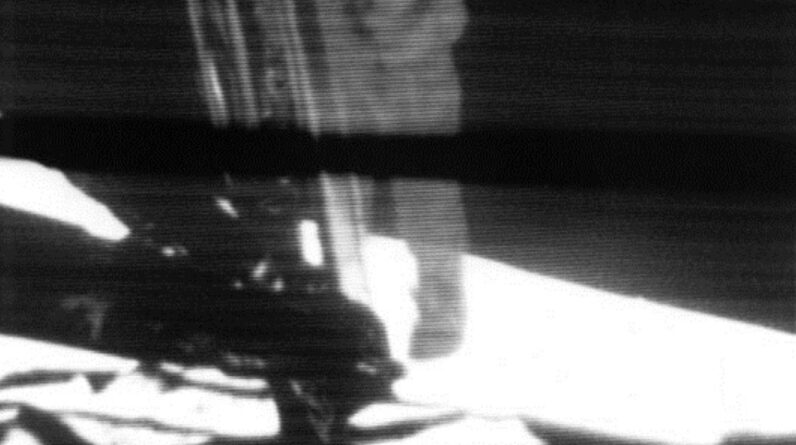
[ad_1]
Neil Armstrong (1930–2012), commander of NASA’s Apollo 11 mission, descends the ladder of the Apollo Lunar Module to become the first human to set foot on the surface of the Moon on July 20, 1969.
Source – NASA’s Apollo 11 Multimedia webpage, Public Domain
There are many theories used to make sense of the world…and then there are conspiracy theories that are generally groundless. This includes the ‘theories’ espoused by groups like Q-Anon and those promoting climate change denial. But how can the general public tell legitimate approaches apart from the senseless theories?
A recent survey shows 78 percent of the U.S. population believes conspiracy theories have a detrimental effect on society. Challenging many of these misassumptions and falsehoods is not always easy.
A conspiracy theory is an explanation for an event or situation that asserts the existence of a conspiracy by powerful and sinister groups; these are often political in motivation.
To try and decipher the differences between a testable theoretical framework and simple or dangerous counterfactual nonsense, the School of Thought International has launched the Conspiracy Test, which is an immersive experience designed to help people conduct their own critical thinking investigations.
This approach stands in contrast to standard debunking strategies, which can often backfire; instead, the approach is designed to help people conduct their own critical thinking investigations.
The test was developed in partnership with academics at Cambridge University (Cambridge, U.K.) and The University of Queensland (Brisbane, Australia). It aims to improve healthy scepticism for ‘conspiracy theories’.
The aim is to help researchers understand conspiracy thinking and how minds change. The test also supports efforts to combat misinformation and irrational beliefs, provides evidence to technology and media companies to help improve their services, and helps governments with ways to fight foreign disinformation campaigns.
The online platform presents a series of critical thinking steps featuring a ‘Deep-state Alien Illuminati Lizard’ named Captain Zardulu. David McRaney, a Director of The School of Thought and author of the best-selling book ‘How Minds Change,’ says that humour was a key element of the design.
McRaney states: “By acknowledging the existence of real conspiracies and making the interaction a little less serious, we hope to reduce defensive attitudes and open people up to explore their beliefs honestly, critically, and without the threat of judgment.”
A target group for the test are the so-termed ‘conspiracy curious’, rather than the much smaller cohort who have strong and entrenched beliefs about conspiracy theories.
The Conspiracy Test is free to play via theconspiracytest.org
Live results are viewable on the website. The School for Thought is planning a formal research study for 2024 in collaboration with its international academic partners.
[ad_2]
Source link






